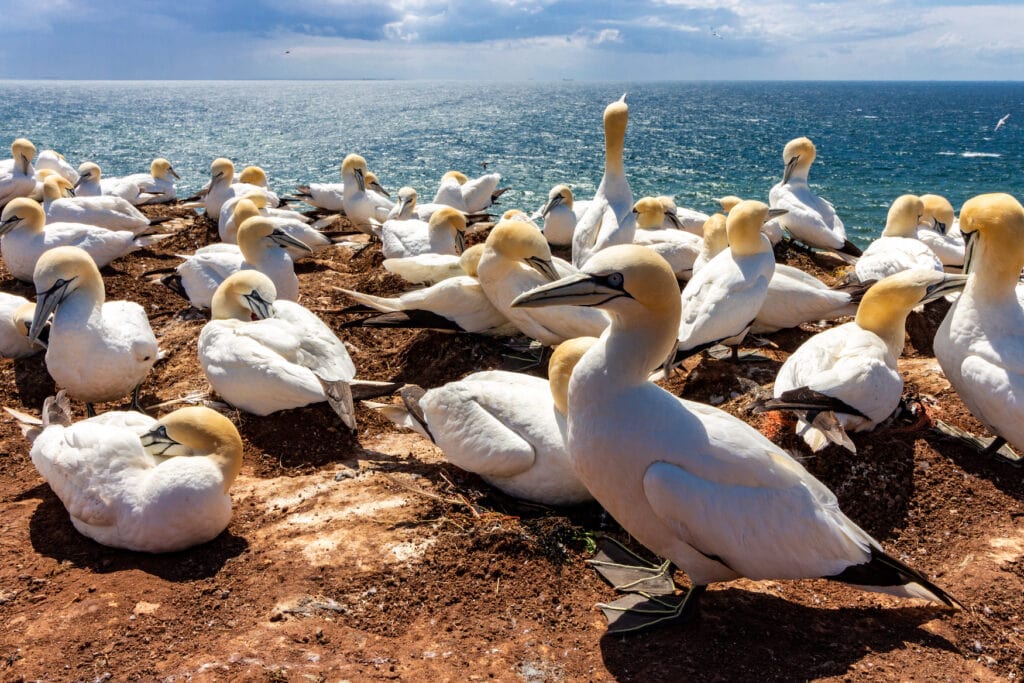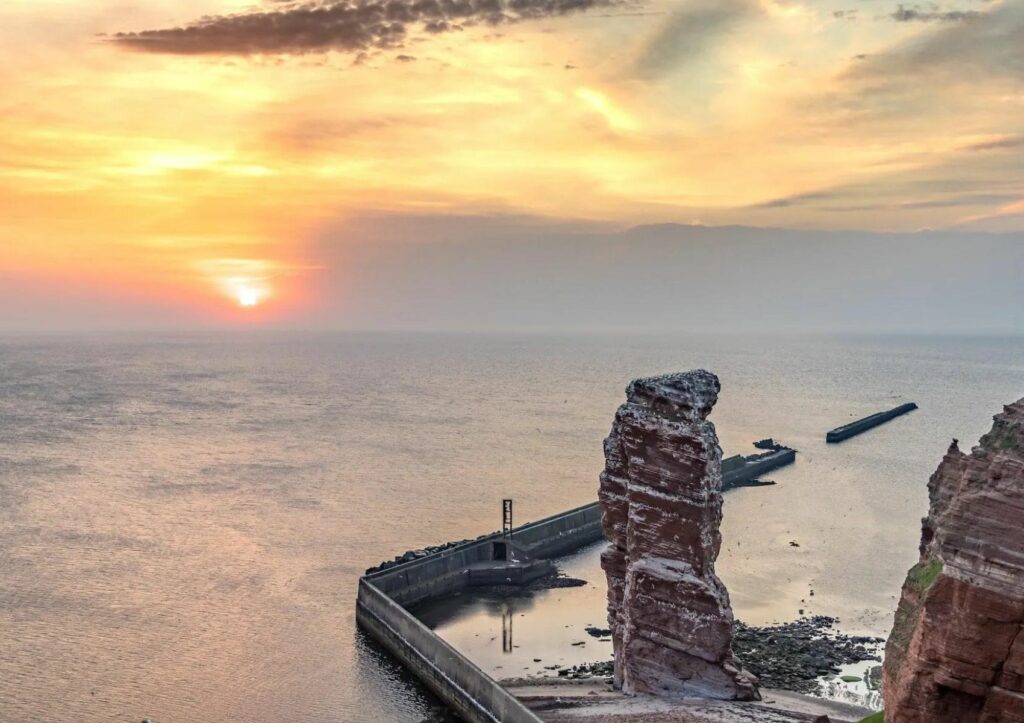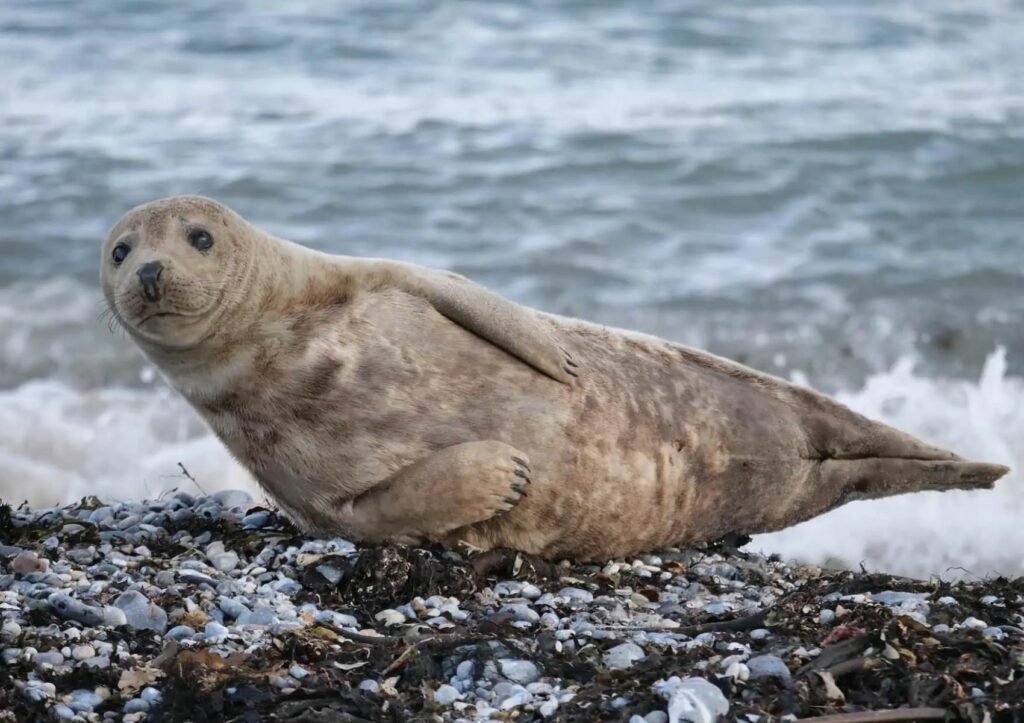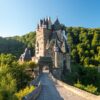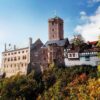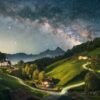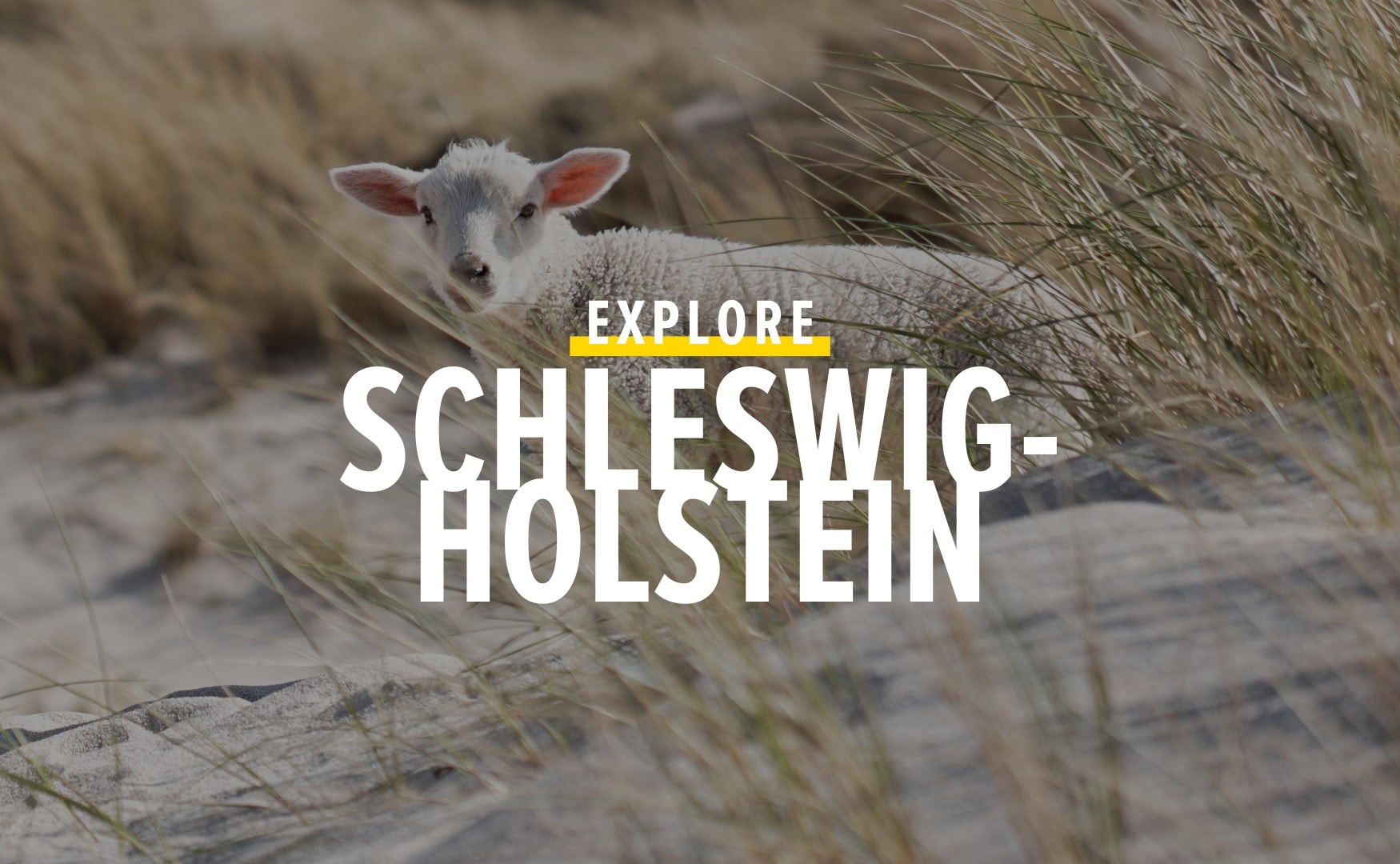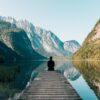Germany’s happiest state is always worth a trip. Richly gifted by two seas, Schleswig-Holstein is so picturesque that you’ll want to move here right away. And anyone vacationing here should urgently think outside the box and look beyond the beach chairs, sand and sunscreen. Here are our recommendations.
Gone with the wind – Dune hikes at Sylt
The northern tip of the island of Sylt, also known as the Elbow, is a large dune landscape where you can hike against the wind and with peace of mind. No cars honk here, only the sheep bleat. In fact, it feels like a far cry from the island’s usual tourist hustle and bustle. Between the eastern and the western lighthouses, you are at the northernmost point of Germany. That’s worth at least one photo, even if the wind hardly allows it. Usually, the hair flutters skywards or tears are driven by the breeze onto your cheeks. It does not matter anyway. To let the wind blow in your face here is simply beautiful.
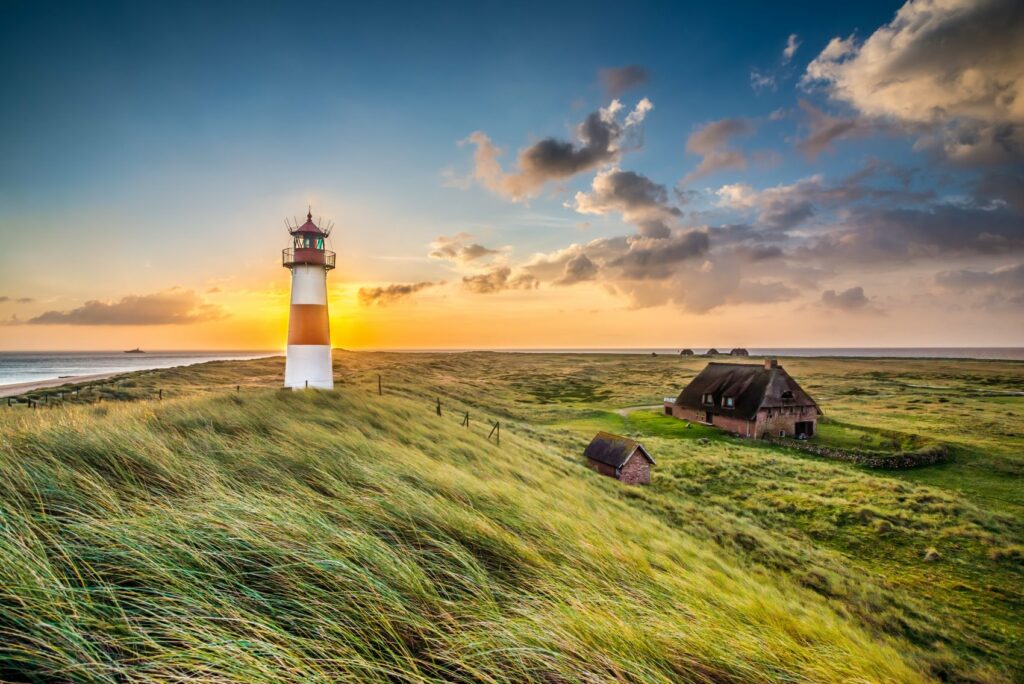
And somehow, you also wander between worlds here. Well, that might be a bit exaggerated. But on the one hand, the natural heritage of the Wadden Sea awaits and on the other hand, the sometimes stormy and unpredictable North Sea washes up its waves against the western side of the island. And since this promontory is very narrow, you can easily move from one side to the other and admire the differences in fauna and flora. Salty air and the cry of seagulls are also included. And for those who are hungry after a long walk, this is not an insider tip, but a recommendation: Freshly caught Sylt oysters are served at the small port of List. And they are really delicious.
Fluffy clouds or cloud-like sheep? – Peninsula Eiderstedt
There are exactly 157 steps to the dome of the Westerheversand lighthouse. Anyone who heaves up has the obvious advantage of a magnificent view. Up here, at a height of 41.5 meters, the whole north lies at your feet: The Wadden Sea, miles of beaches, salt marshes with lots of birds, dykes and cloud-like sheep. So, it’s no wonder that Westerheversand is, so to speak, the poster boy among the lighthouses. In 1908, it was put into operation as a navigational aid over the Tümlau Bay. The twin Frisian style outbuildings served as accommodation for the lighthouse keeper until the late 1970s. Back then as well as today, the lighthouse is a landmark of the region. The Stockenstieg path, laid out with clinker bricks in 1929, was once the only access to the tower. It is now a listed building and may be only walked on in the direction of the dyke.
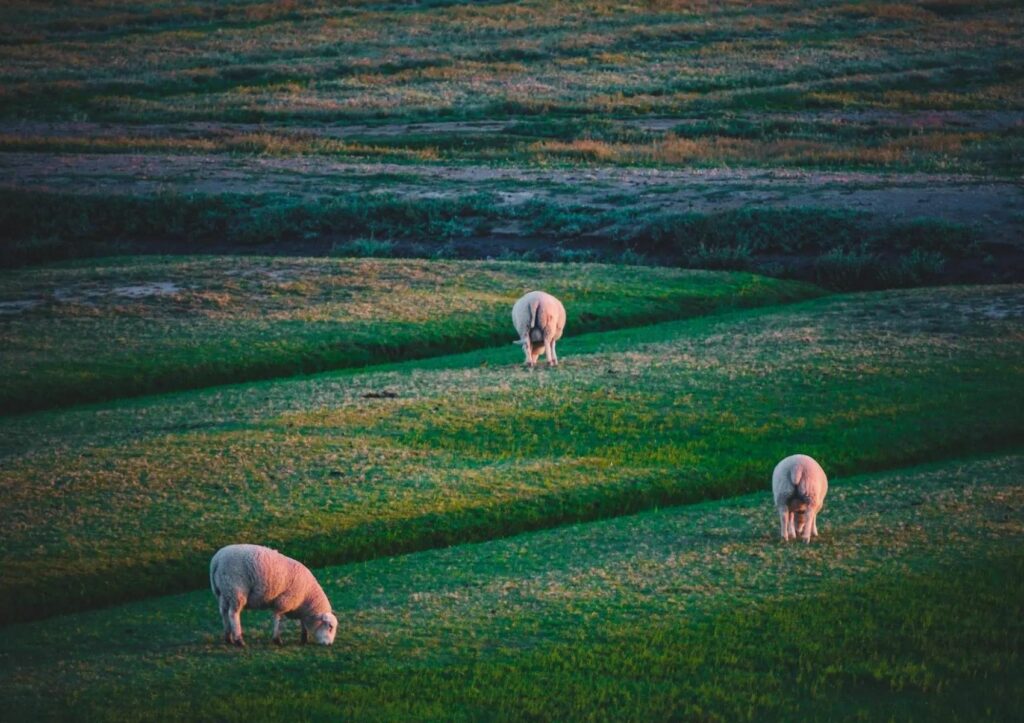

Visiting Wickie – Museum Haithabu in Schleswig
We don’t want to open up the debate about whether Wickie – a cheeky viking boy from a German children’s animated series – was more of a boy or a girl. We do not know it. But one thing we know is for sure: the child belonged to the Vikings, and they in turn once had a branch in Schleswig-Holstein.
The Viking city of Haithabu was a vibrant trading center from the 9th to the 11th century. “A very large city at the extreme end of the sea,” wrote the Arabic chronicler At-Tartushi. In Germany’s only Viking Museum, on the site of the former town, where the paths of people and goods from all over the world crossed the life of 1000 years ago in replica houses at the pier on the Schlei, get to know the useful plants in a garden and even shoot with a bow and arrow.
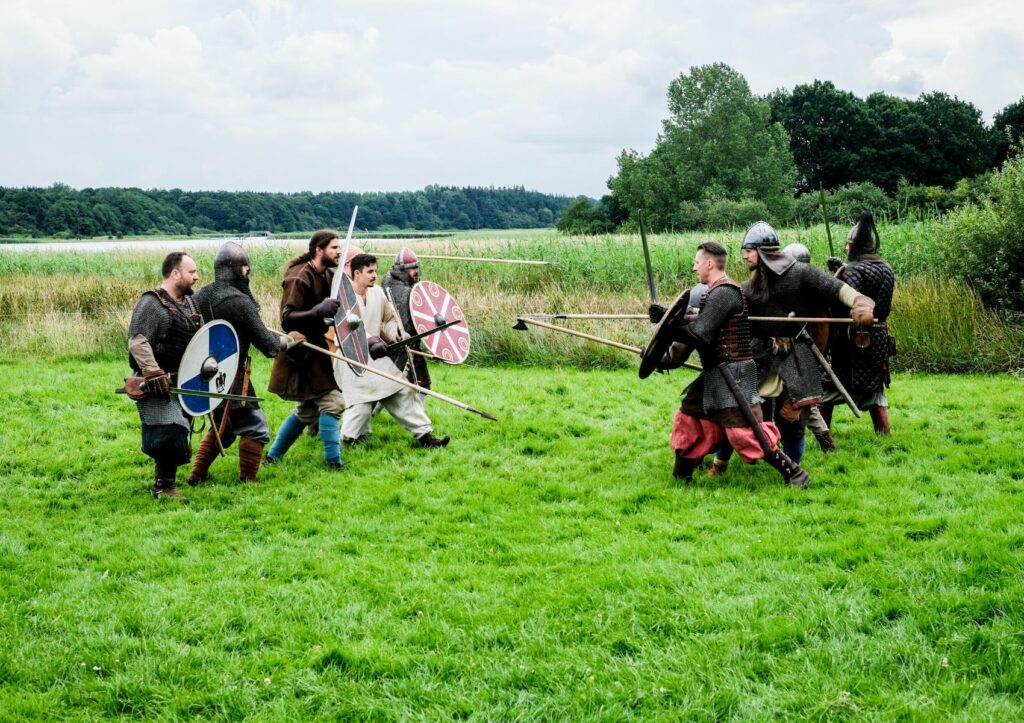
In the Viking Museum, ships, historical merchandise, works of art such as the famous dragon head pin, a rune stone and other spectacular finds take you into the fascinating world of the Vikings. And if you want to stop off afterwards – either for cake or a hearty meal, Odins is recommended. Our favorite is the Viking pizza Thor.
Fresh Friko – Visiting the North Sea spa Friedrichskoog
One looks in vain for a beach on the piece of land reclaimed from the North Sea in 1853 between the mouth of the Elbe and the Wadden Sea National Park. Because the mudflats begin right behind the dyke. But don’t worry because there are beach chairs! However, they stand on meadows. If you have packed sand toys for the kids, you have to be inventive and go to a playground, because in Friko – as Friedrichskoog is affectionately called – no sandcastles are built to the sound of the sea.
A trip to the mudflats is all the more worthwhile for this! The fact that the feet get a massage treatment is a pleasant side effect. Provided – you go in the summer. At other times of the year, rubber boots and, of course, professional guidance are recommended. You should never go out into the mudflats alone.
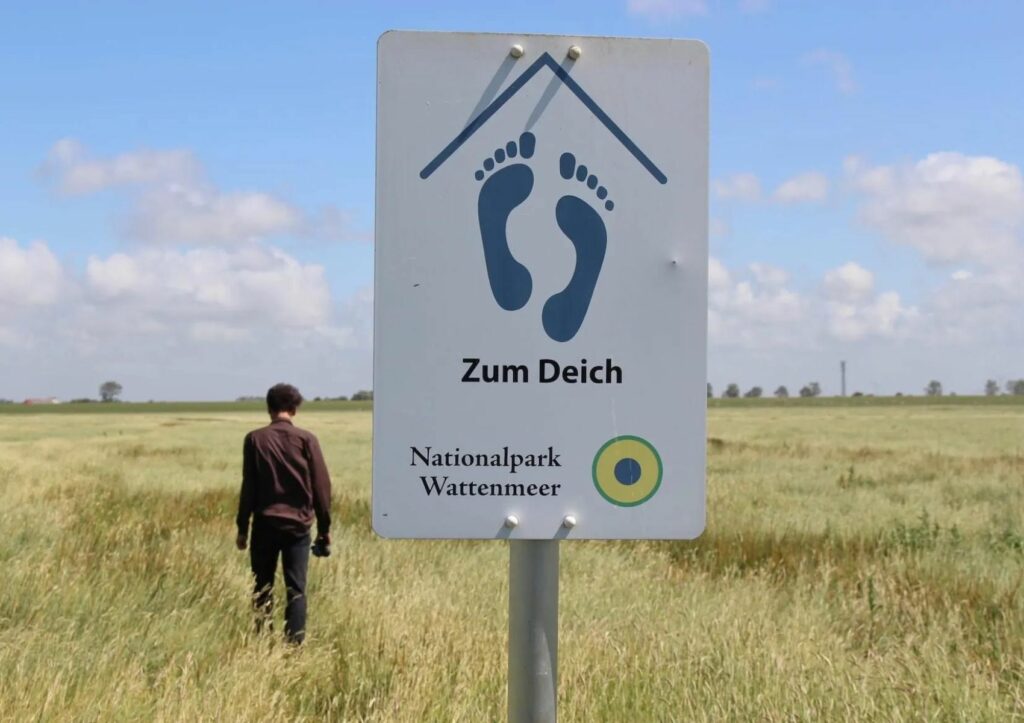
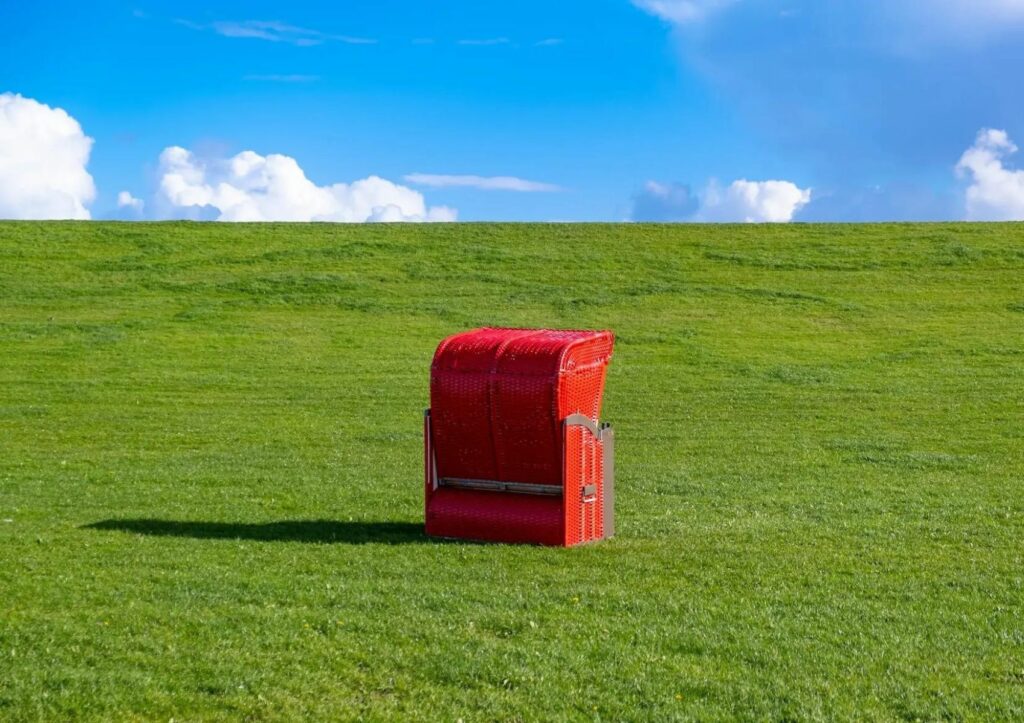
But Friedrichskoog has even more to offer: it has had the status of a North Sea health resort since 2004. But it’s not just people who do good things for body and soul here. 20 years ago, a seal sanctuary known from television for raising howlers was set up. Visitors can follow the care measures for the young seals and gray seals up close. And, they’re damn cute!
Up and down – hiking on the Wadden Sea
At 9,000 square kilometers, the Wadden Sea of the North Sea is the largest in the world. This is nothing new, but it’s always fascinating when the water recedes twice a day. It is then that the sea leaves behind a huge landscape of silt, criss-crossed by tidal creeks, where waterfowl search for food.
Non-feathered two-legged friends should definitely get to know this unique landscape on a mudflat hike and keep an eye out for the Small Five! What exactly is that? Researchers call the five most important animals in the Wadden Sea the Small Five. They are the advertising symbol for the Wadden Sea World Heritage Site. This refers to the lugworm, the common cockle, the common beach crab, the common mud snail and the North Sea shrimp.
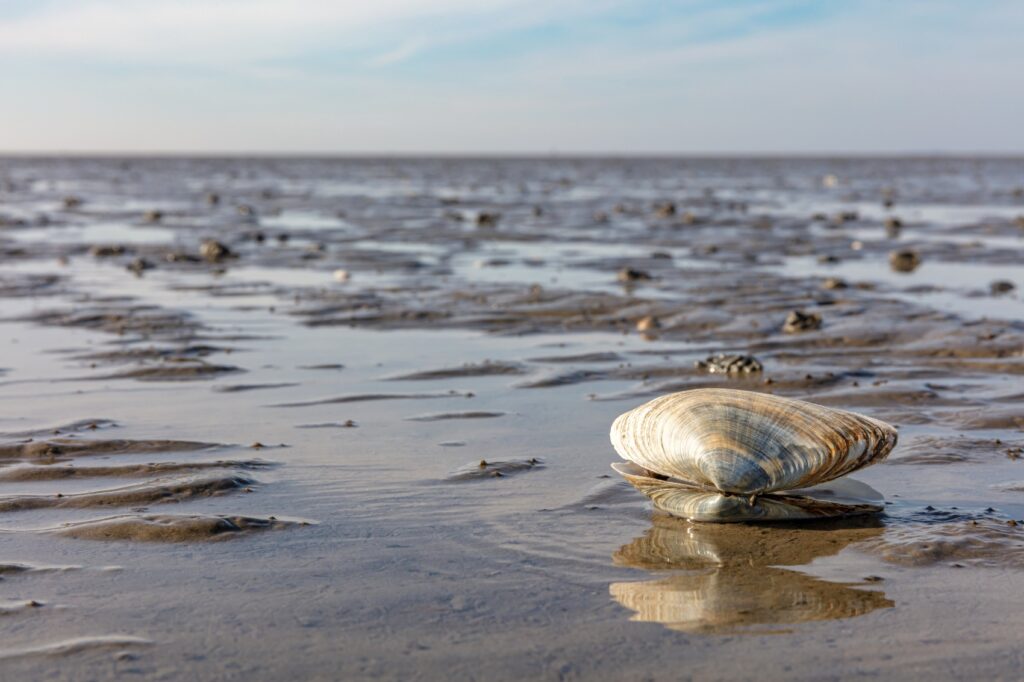
Hello Heligoland – Lummenfelsen and gray seals
Ah, Anna. Everyone admires her as she is reddish in color and quite long. She is the rock in the surf. But the car-free Heligoland has more to offer than the natural monument of the Long Anna and the Lummenfelsen, which in turn is a busy airport for hundreds of seabirds. Knieper is also served in the lobster stands at the port. The crab has replaced the lobster as a specialty. Also, you should not miss a detour to the 0.7 square kilometer small neighboring island of Dune. The picturesque island is lined with stretches of beach on three sides. And bathers often share these with dozens of common and gray seals. You can approach the not at all shy sea predators up to 30 meters.
